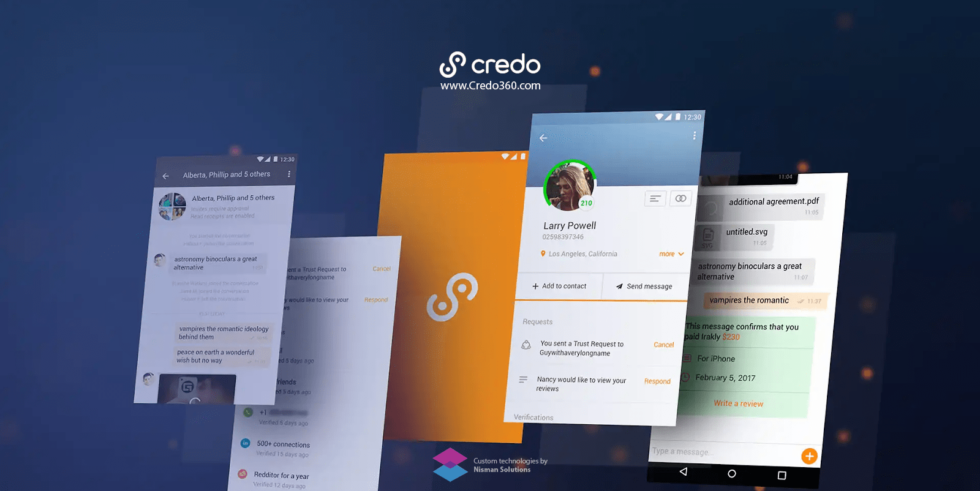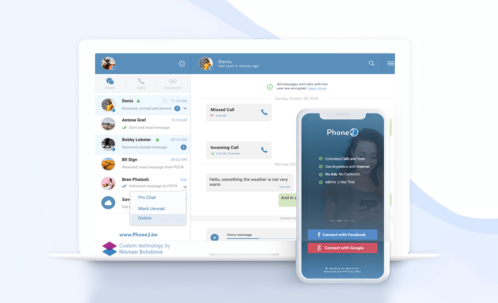Developing an app can be a difficult task for any business, especially if this is the first app that you have created or managed. You have to analyze a problem, come up with an idea for an app that will solve the problem, determine specifications, then create the final design, formulating the overall structure of the program and developing the algorithms.
While it’s true that the process of mobile app design for businesses can be long and repetitive, that doesn’t always have to be the case.
With the help of learned best practices for mobile web application development, your teams can avoid the four most common pitfalls of app development and create a sleek, user-friendly app faster than you thought possible.
Pitfall #1: Trying To Make The App Do Too Much
With apps, minimalism is key.
You might believe that in order for your app to be useful, it has to solve several or many problems at once, but that simply isn’t the case. It is a common mistake that many developers make. Instead of creating a single-purpose tool they tend to overcomplicate it and create a Swiss Army knife of app features. The more complex your app is, the more difficult it is for your users to use.
When developing your app, make sure it solves a limited number of problems, and make sure those problems are related. An app that does not have a focus becomes forgotten by users.
Pitfall #2: Bad Interface
Clean interfaces are crucial for usability. It is important to keep in mind that touch screens don’t have the precision of computer mice, so the interface must be simpler, intuitive and more forgiving. Placing action buttons such as “Save” next to the buttons that “Delete” all the work is a common design overlook that causes a lot of trouble for users.
However, even if it makes sense to place these actions together from a logical standpoint, since they are related and both decide the fate of the element in question, whether you’re trying to “Save” it or “Delete” it, it also makes it easy for users to press the wrong button or icon, especially when they are in a hurry, performing repetitive actions, or have motor difficulties.
Avoiding cluttering the interface with unnecessary buttons will save you time and will keep your users engaged with the app longer.
Pitfall #3: Ignoring Behind The Scenes Processes
A good app is not just about the interface—what happens behind the scenes matters as well. The differences between desktop and mobile environments can be so drastic and not translate well from desktop to mobile, so many developers trip on these obstacles.
In case with the desktop, the operating system uses time-sliced allotments so all applications run for short periods in rapid succession. With the mobile it’s a different story. If an app needs to do something continuously, then it has to create a background process. But background processes can burn through battery power, while you want users to be able to use their phone for the whole day. It is important to remember that users are quick to abandon apps that shorten their phone’s battery life, so optimizing processes behind the scenes is vital.
Pitfall #4: Trying To Make The App Perfect From The Start
Many entrepreneurs expect their apps to be perfect from the start, but that’s simply not how the coding world works. If you have any apps on your own smartphone, you’ve probably noticed that the best and most popular apps are continually asking you to install updates—continual improvement is the name of the game.
Product owners often don’t know exactly how the end users will use their apps and but still attempt to release a perfect app that often ends up a waste. Once the app is released and the real world usage data is collected, it becomes much more obvious how to improve their apps. Since it will have been released and used by many users, scalability, reliability, and attainment of design and programming benchmarks can be measured.
Then, developers can review the problems or inefficiencies that users are running into and release subsequent updates to improve the user experience.
A successful app is maintained and continually developed throughout its life.
Pitfall #5: Not Designing Security Into The Application
In this day and age, security should be a top concern for all businesses designing apps. While it may feel counterintuitive, designing security into an application is a great way to ensure that you will experience fewer problems with data breaches later on.
For example, you should:
- Ensure that the app doesn’t store unnecessary private or sensitive client data. No business wants to be responsible for private customer data breaches.
- Ensure that you are aware of the security flaws specific to the coding framework you choose. Your development team should periodically review and update the security built into your app’s code.
- Ensure any and all private data is encrypted according to the security best practices.
- Ensure that you are aware of potential threats and security considerations. Once again, you do not want to be responsible for customer private data breaches.
Pitfall #6: Skipping Consumer App Marketing Research and Beta Testing
Finally, and possibly most importantly, some entrepreneurs skip a key part of the app development process: marketing research and beta testing. This phase is key to good user retention because it promotes a slower app rollout where user interface and coding problems can be identified and fixed before the product is released to the public.
Find out what consumers want. Market research is how you will figure out exactly what your future users want in a mobile app. It’s important that you figure this out in the early stages of the development process—otherwise, you may realize too late that there is no market for your expensive creation. Look at items like app analytics sites or app forums to get started.
Test your findings. Once your app has been created, test your findings through a beta test. Do your users really like that feature that the forums said was indispensable? Do they actually like the modern design you used, or do they want something more traditional? Beta tests provide the last chance for you to make vital adjustments before you offer your app to the public.
Pitfall #7: No Plan for Post-Launch Bugs
Despite your best efforts in User Acceptance Testing, there is always a chance that a bug will manage to slip through the cracks. Now it is live in your app, and it is logical that the client would want it to be fixed. Make sure that you have an agreement with your client for those events when the bug was caused by unforeseen circumstances, like problems with an existing web-service.
It is perfectly acceptable to offer the client a warranty period limited to 2-4 weeks of free support. Make sure that you and the client discuss and agree to post-launch support policies, specifying for what period of time they are going to be in power. It is important to be clear about the details, otherwise it is fair to assume that items that you did not cover in your agreement you’ll be fixing for free.








